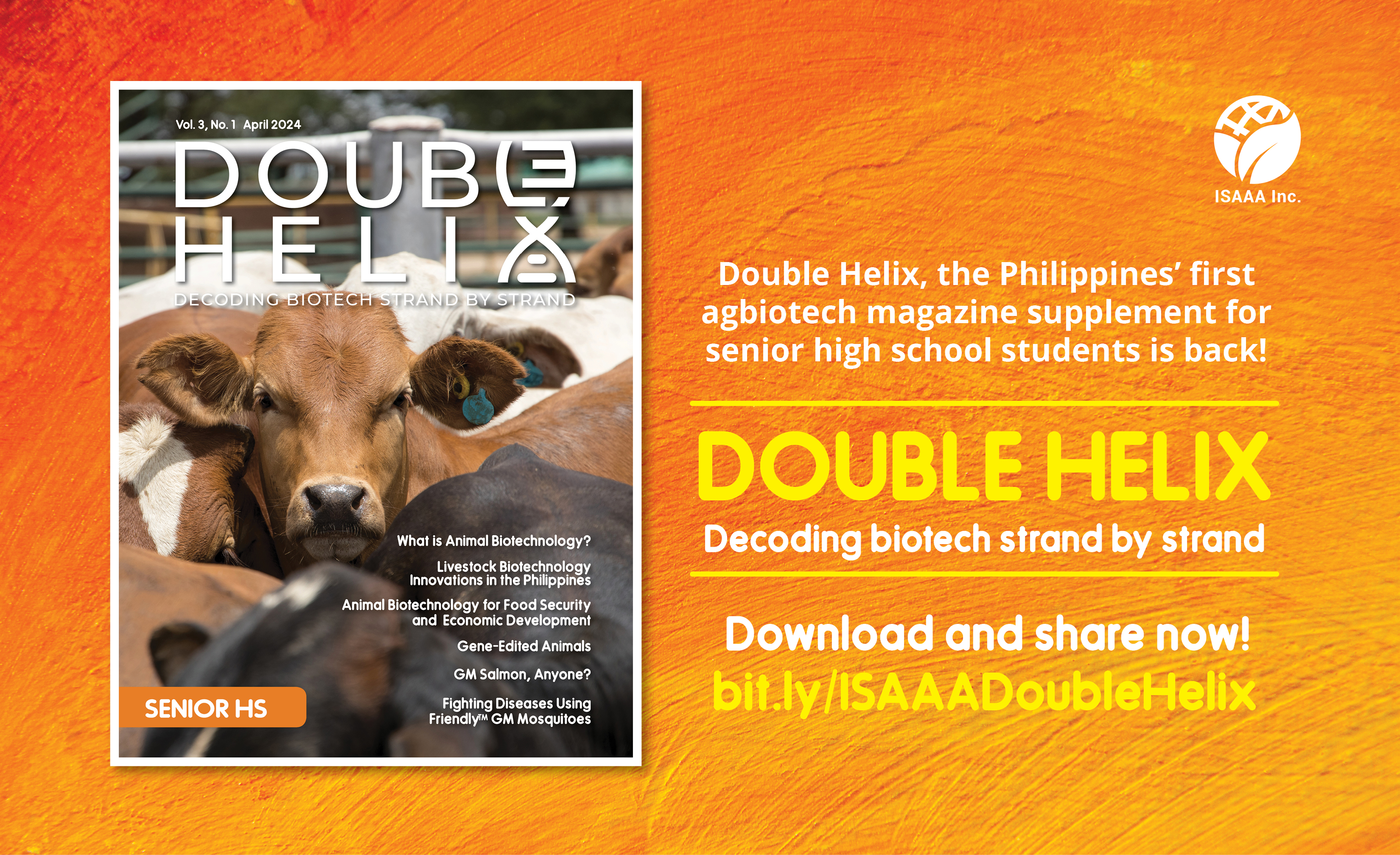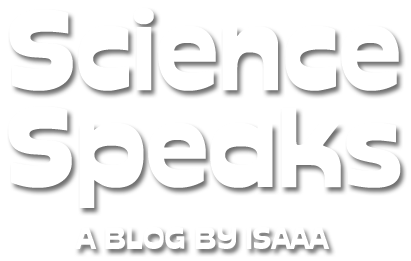Third Issue of Double Helix Magazine Features Animal Biotechnology
| |

ISAAA Inc., through the Philippine Department of Agriculture Biotechnology Program Office's Know The Science: Strengthening Biotech Links project, has released the third issue of Double Helix, the first and only magazine supplement on agricultural biotechnology (agbiotech) for senior high school students taking the Science, Technology, Engineering, and Mathematics (STEM) strand in the country.
Magazines aid classroom instruction
Magazines are a valuable resource for high school students. They provide students with exposure to diverse topics and viewpoints as magazines cover a wide range of subjects, from science to current events and pop culture. This allows students to explore areas they might not encounter in class and develop a well-rounded understanding of the world. They can also see different perspectives on important issues, which helps them form their own opinions.
Magazines can also serve as a springboard for high school students' deeper learning. Magazine articles can spark curiosity and ignite a passion for further learning. Interesting magazine topics can be starting points for young people to do their research or explore related topics in more depth.
Lastly, magazines help literacy development. Magazines are written in an engaging and accessible style, making them a great way for students to improve their reading comprehension and vocabulary. Magazine articles are less daunting than textbooks, and the visuals can help break up the text and make it more enjoyable to read.
The third issue of Double Helix features animal biotechnology
Animal biotechnology has a fascinating history dating back to 8,000 years ago when humans began domesticating wild animals and selectively breeding them for meat and milk production. As humans favored animals with specific traits and bred them together, they unconsciously selected domesticated animals, from cows with high milk production to dogs with specialized skills.
The discovery of the genetic code in the 1960s ushered in a new era of animal biotechnology with much more precise tools. Understanding DNA opened doors to gene manipulation, and techniques such as artificial insemination, embryo transfer, and cryopreservation of sperm and embryos became commonplace in animal agriculture. In the 1970s, the development of recombinant DNA technology allowed scientists to insert specific genes into animals. This led to the creation of genetically modified (GM) animals for research, medicine, and even potentially improved food production.
The field of animal biotechnology continues to evolve rapidly. The progress in sequencing of animal genomes, gene expression, and metabolic profiling of animal cells have made possible advances in animal biotechnology. More recently, genome editing technologies (CRISPR-Cas systems, TALENs, and Zinc Finger Nucleases) have created new opportunities to easily develop genetic variations in animals that can improve their health and well-being, agricultural production, and protection against diseases.
In the first issue of Double Helix in 2022, the eight-page magazine presented the process of developing a biotech crop, the countries where biotech crops are grown, biotech crops in the Philippines, Filipino biotech corn farmers, news briefs, and some cool and fun science activities and exercises for senior high school students and their teachers to enjoy. It has been highlighted in the exhibit during the 2022 National Biotechnology Week in November, reaching more students from different regions in the country.
The second issue of Double Helix focused on gene/genome editing. The magazine explains how gene editing works and presents two gene editing tools — CRISPR and TALENs. The issue also includes the current gene editing R&D initiatives in the country that are being conducted in various institutions. An article in the magazine also presents the genome-edited products in the market.
The third issue of Double Helix features animal biotechnology. The magazine presents livestock innovations in the Philippine pipeline written by Dr. Marvin A Villanueva, Scientist I and Chief of the Philippine Carabao Center’s Livestock Biotechnology Center. A spread written by Kaymart A. Gimutao and Janine Cyren Escasura presents GM-improved and gene-edited animals that are approved for commercial release and already sold in the market. Dr. Casiano Choresca, Jr., Scientist I and Center Chief of the National Fisheries Research and Development Institute, wrote the article on AquAdvantage Salmon. The article on Aedes Friendly mosquitoes is written by freelance science writer Zabrina J. Bugnosen. Lastly, fun science activities called "Citizen Science" and "Find the 5 Differences" are provided so students can enjoy them either in school or at home.
The pages of Double Helix contain links to resources for further reading and QR codes for information materials published on the ISAAA Inc. website that are related to the magazine's feature articles. Double Helix magazine is free to download from the ISAAA Inc. website. It is also free to use, and interested high schools can get in touch with the ISAAA Inc. team if they want to use the magazine in their instruction.
Download Double Helix issues from the ISAAA Inc. website. For inquiries, send an email to double.helix@isaaa.org
For further reading:
- ISAAA Launches Double Helix Magazine Supplement for Senior High School Students
- New Double Helix Focuses on Gene Editing
| Newer Post | Archive | Older Post |
Science Speaks is ISAAA Inc.'s official blog. Weekly blog articles, authored by ISAAA writers, partners, and invited contributors, aim to help share, disseminate, and promote scientific knowledge and its vital role in achieving global agricultural sustainability and development. Your support to Science Speaks will help us achieve this goal. You can help us by donating as little as $10.

